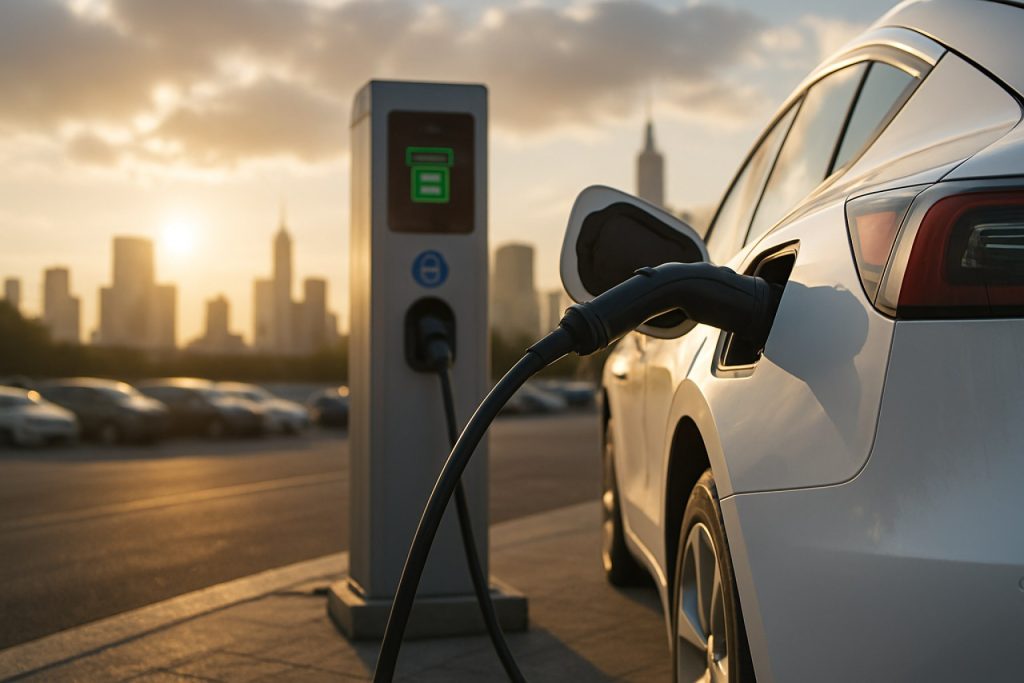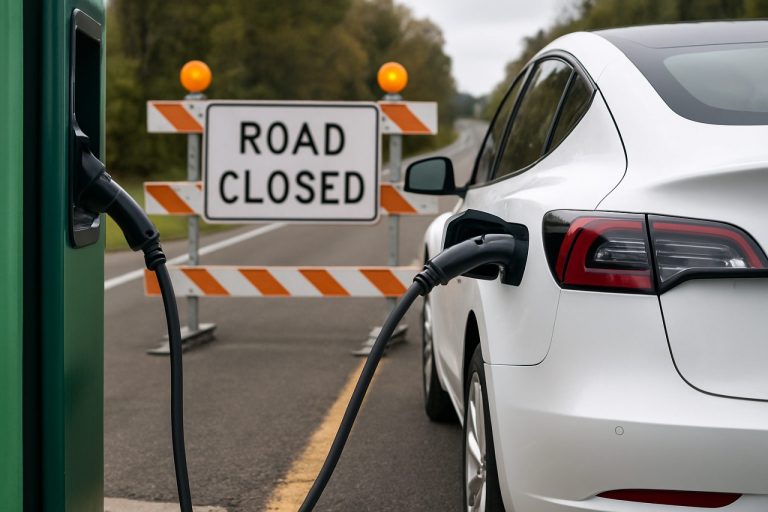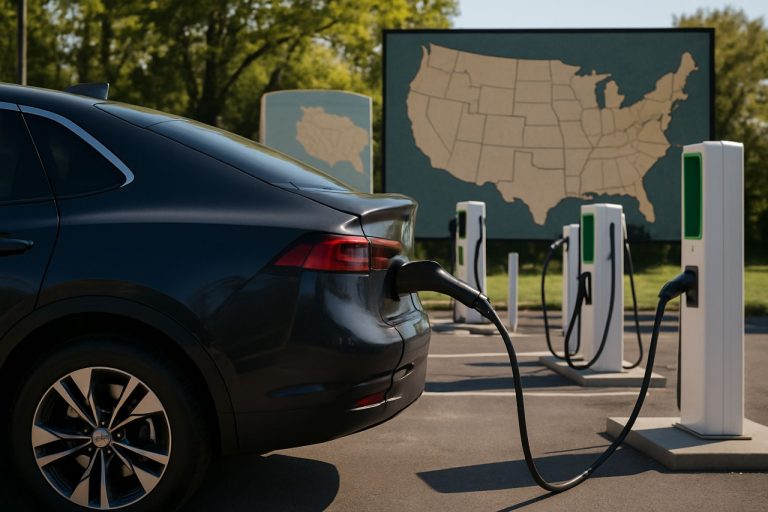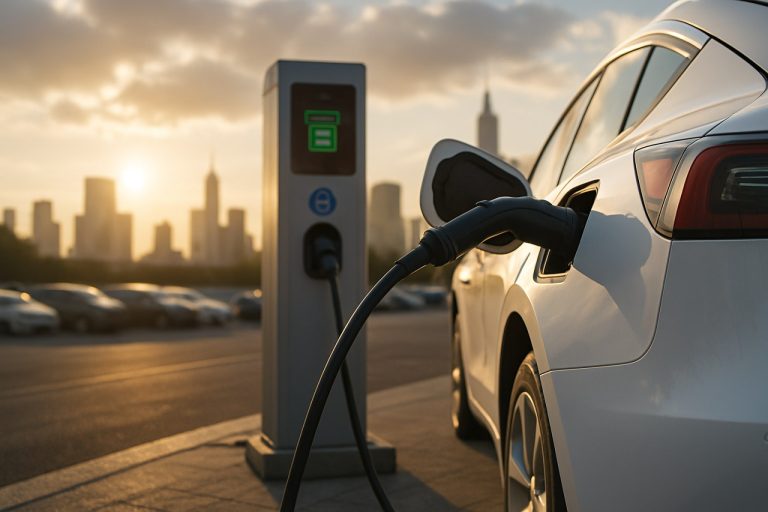
- EV battery output is set to soar, with leading companies like CATL and LG Energy Solution targeting over 500 GWh annual capacity by 2030.
- Global demand for electric vehicle batteries is forecasted to grow at 40% annually, fueled by net-zero mandates and urban electrification.
- Innovative battery technologies are emerging, with nickel-manganese-cobalt (NMC) batteries powering performance vehicles and lithium iron phosphate (LFP) gaining popularity for cost and longevity.
- Solid-state batteries are approaching commercial viability, offering potential gains in charging speed, safety, and energy density.
- Recycling companies like Umicore and Redwood Materials are crucial for sustainable sourcing, minimizing environmental impact and supply chain risks.
- India is becoming a major player in battery manufacturing, driven by government incentives and policies promoting EV adoption.
- Declining battery costs and improved performance are rapidly making EVs more accessible to mainstream consumers.
A silent race is unfolding in the bright-lit corridors of global industry. Factories hum, robotic arms move with calculated precision, and men and women in lab coats examine the next generation of electric vehicle (EV) batteries—a technological leap that will reshape not just commutes, but entire urban landscapes and economic strategies.
As the world veers away from fossil fuel dependence, EV battery output is primed to rocket toward unprecedented heights by the end of this decade. Major manufacturers are investing billions. CATL and LG Energy Solution are laying claim to the world’s largest battery output, each projected to eclipse 500 GWh annually before 2030. Across Northern Europe, Northvolt’s pristine Swedish gigafactories, and in the innovation centers of South Korea, Samsung SDI is scaling rapidly to supply rising Asian and European markets.
Across these continents, soaring numbers reveal the intensity of the shift. Industry forecasters expect demand for EV batteries to explode at a 40% annual compounded rate, outpacing most other tech segments. This voracious appetite is powered by government net-zero mandates, a tidal wave of urban electrification, and a public ever more impatient with roadside emissions.
Underpinning this surge are scientific victories. The now ubiquitous lithium-ion battery is rapidly evolving within itself, presenting a palette of chemistries. While nickel-manganese-cobalt (NMC) batteries set the standard for performance vehicles—delivering greater range and nimble acceleration—more manufacturers now embrace lithium iron phosphate (LFP) batteries. These robust cells offer greater thermal stability and longevity, all while trimming production costs. Automakers like Tesla are weaving LFP packs into global fleets, a calculated move to democratize EVs for broader markets.
Yet, the world watches the slow dawn of an even more dramatic breakthrough: solid-state batteries. Engineers in research campuses, fueled by competition and possibility, are closing in on making these lighter, safer, and higher-capacity cells a commercial reality. The promise is immense—vehicles that charge in a flash, travel further, and weigh less—ushering in a paradigm shift for design, convenience, and safety.
Amid this technological arms race, ethical and environmental imperatives take center stage. The battery revolution is drawing lines between the past—punctuated by waste and hazardous mining practices—and a circular future. Within sparkling recycling hubs, companies like Umicore and Redwood Materials extract valuable elements like lithium, cobalt, and nickel, breathing new life into old batteries and curbing the world’s reliance on unstable supply chains.
India, long poised at the crossroads of growth and innovation, is stepping onto the stage with ambition. Government-backed incentives are transforming the nation into a major battery manufacturing destination, feeding domestic EV adoption and charting a course toward sustainable urbanisation. Every gigafactory erected, every research grant allocated under the nation’s FAME II and PLI programs marks an investment in jobs, climate action, and global competitiveness.
The momentum is now irresistible. As EV battery costs decline and performance scales new peaks, the case for electric transport strengthens not only for luxury buyers but for the masses—especially in densely populated urban centers where cleaner streets mean tangible improvements in life and health.
The key insight? The next five years will decide how swiftly we transition from combustion engines to clean, silent electrification. Everything hinges on the humble battery—the unsung hero at the heart of this new era. Cities will breathe easier, industries will adapt or falter, and a climate-stricken world will finally glimpse hope in the glow of a fully-charged future.
Explore more about electric vehicle technologies and news at Bloomberg and get the latest from manufacturers at Tesla.
The Global EV Battery Revolution: What You Aren’t Hearing (But Need to Know!)
The Unstoppable Rise of the EV Battery Industry: Beyond the Headlines
As electric vehicles rapidly become the cornerstone of global transportation, the evolution of EV battery technology is the engine driving this transformation. While the surge in manufacturing capacity and market forecasts captivate headlines, several crucial aspects—spanning technology, ethics, market impact, and practical guidance—remain underexplored. This deep dive sheds light on those pressing questions and uncovers the less-publicized dynamics shaping our electrified future.
—
EV Battery Technology: Hidden Advances & Real-World Impacts
Beyond Lithium-Ion: A Diverse Landscape of EV Batteries
– Chemistries in Play: Besides NMC and LFP, industry giants and startups are experimenting with lithium-sulfur, silicon-anode batteries, and sodium-ion technologies (source: MIT Technology Review).
– Silicon Anode Boost: Companies like Sila Nanotechnologies have reported up to 20% more energy density over standard lithium-ion, potentially shrinking battery packs or increasing range (source: Sila Nanotechnologies).
– Fast-Charging Benchmarks: Promising “10-minute charging” claims for prototype batteries have been made, though safe, affordable, mass-market rollout is 2–5 years away.
– Solid-State Race: Toyota and QuantumScape plan commercial vehicles with solid-state batteries in the second half of this decade—potentially offering double the range and enhanced safety.
—
Major Manufacturers & Gigafactories: More than Output
Global Production Hubs
– CATL, based in China, and LG Energy Solution in South Korea, are not only leading on capacity but also have significant influence on raw material pricing and global battery R&D.
– Northvolt is introducing closed-loop recycling at their Swedish gigafactories, reducing virgin material demand.
– U.S. Surge: Tesla’s and GM’s joint-venture gigafactories in the U.S. will contribute to energy independence and local job creation.
Supply Chain Security
– Major automakers are now signing direct contracts with mines and refiners (e.g., General Motors/Korea’s POSCO) to secure nickel, cobalt, and lithium against geopolitical and market instability (source: Reuters).
—
Green Credentials, Security & ESG (Environmental, Social, Governance)
Sustainability Breakthroughs
– Lifecycle Recycling: China and the EU are moving toward mandatory battery recycling quotas as early as 2025.
– Second-Life Batteries: Retired car batteries find new homes in stationary energy storage, supporting grid reliability and renewable energy integration.
– Ethical Sourcing: Increased scrutiny on cobalt mining in the Democratic Republic of Congo (DRC) and the emergence of battery passports for ethical tracking (source: Amnesty International).
—
Industry Trends & Market Forecasts
Growth Expectations
– The International Energy Agency (IEA) forecasts global battery demand will climb from ~340 GWh in 2021 to over 3,500 GWh in 2030—over 10x growth.
– Cost Plunge: Average battery pack prices dropped from $1,200 per kWh in 2010 to under $140 in 2023, with sub-$100 considered the EV tipping point (source: IEA, BloombergNEF).
Upcoming Game-Changers
– Sodium-Ion Batteries: CATL aims to commercialize sodium-ion cells in 2024–2025, with potential for cheaper, safer EVs and grid storage.
– Vertical Integration: Automakers (e.g., Tesla, BYD) vertically integrate battery design, manufacturing, and recycling for better cost control and innovation.
– Incentives Drive Adoption: India’s FAME II and PLI, the U.S. Inflation Reduction Act, and the EU’s Green Deal are all propelling national battery manufacturing booms.
—
Practical Tips & Hacks for EV Owners
How to Extend Your EV Battery Life
1. Avoid frequent fast-charging unless necessary—slower charging extends battery health.
2. Keep battery charge between 20%–80% for everyday use; avoid full discharge or charge.
3. Park in shaded or climate-controlled areas—high temperatures accelerate battery degradation.
Recycling Old Batteries
– Contact certified recycling programs—automakers like Tesla and Nissan accept old batteries for recycling (visit: Tesla and Bloomberg for news).
– Repurposing: Some EV batteries are reused in solar storage for homes.
—
Comparisons, Pros & Cons
| Battery Type | Pros | Cons | Use Cases |
|—————-|—————————|——————————|————————–|
| NMC Lithium-Ion| High energy/range | Expensive, less safe | Performance EVs |
| LFP Lithium-Ion| Cheaper, stable, safe | Lower range | Mass-market EVs, buses |
| Solid-State | High density, very safe | Expensive, not yet mass-market| Future luxury/long-range EVs |
—
Controversies & Limitations
– Raw material mining (especially cobalt and nickel) faces environmental and ethical backlash.
– Battery recycling infrastructure still lags behind surging EV adoption.
– Solid-state and new chemistries face commercialization and cost-hurdle delays.
—
Pressing Questions Answered
How much longer will EV prices drop due to battery tech?
– Consensus suggests 20–30% further price declines by 2030, making many new EVs cheaper than gasoline vehicles by 2027–2028 (source: BloombergNEF).
Are current EV batteries safe?
– Incidents are rare. Strict global safety standards and advanced battery management systems drastically reduce fire/explosion risk.
Will batteries become 100% recyclable?
– Current recycling tech can recover 95%+ of cobalt, nickel, and lithium. Continued investment aims for full reuse within a decade.
—
Actionable Recommendations
1. If you’re considering an EV, prioritize models using LFP packs for maximum lifespan and peace of mind.
2. Stay informed about incentives in your area—signing up early for rebates or trade-ins can save thousands.
3. For fleet operators: Plan for battery recycling contracts and “second-life” storage agreements in your procurement.
—
Explore Further
– Stay updated on battery breakthroughs and industry shifts at Bloomberg
– For direct manufacturer updates and new EV releases, visit Tesla
The electrification wave is more than hype; it’s a transformation with deep, lasting implications for consumers, industries, and the planet. Now’s the time to plug in and power the future!



